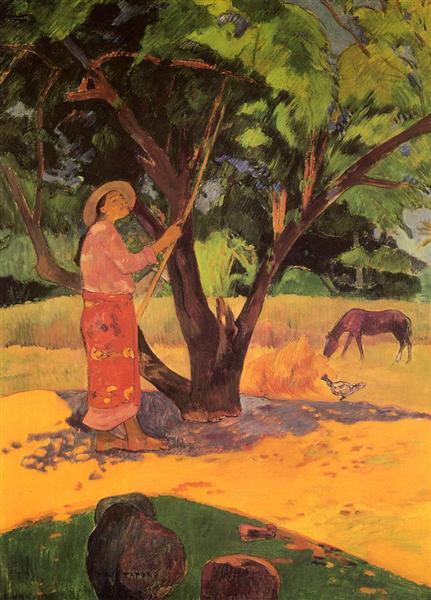描述
保罗·高格因(Paul Gauguin)的作品《皇家石灰收藏》(Limones Collection)的作品是在这位杰出的印象派画家艺术演变的关键时刻注册的。这幅画反映了加林的颜色,形状和现实的独特方法,使我们能够进入艺术家与他的环境之间的亲密联系,以及在寻找超越视觉表现形式的风格中,以进入领域象征和情感。
在构图中,中心人物是一个坐着,宁静的表情的女人,致力于收集柠檬的任务。在这样的日常和简单的举动中,妇女的姿态成为了乡村生活和手工工作的象征,这些方面深深地钦佩。该名女子穿着衣服,表现出色彩丰富,强度优于印象派作品中使用的调色板,这是Gauguin风格的特征。这种颜色的使用表明了它优先考虑关于自然主义代表的情绪唤起的趋势,从而使观众能够与图像本质的直接联系。
这项工作是在丰富的黄色和绿色范围内开发的,突出了柠檬和周围植被的新鲜感。黄色的选择不仅是功能性的,而且代表了光,温暖和活力。因其大胆而受到批评和称赞的元素。该构图的特征是一个既有亲密又广阔的空间,在该空间中,女人的身材正在冥想自己的作品,在似乎被及时被逮捕的环境中。
及其旺盛的植被的“石灰收藏”的背景与波利尼西亚地球建立了联系,高加因将经过他一生的重要时期。尽管该作品似乎锚定在该系列的简单场景中,但也可以解释为对人与自然的关系的沉思,这是艺术家作品中反复出现的主题。妇女与环境互动的方式可以反映高加因渴望的原始主义的理想,以寻求摆脱现代欧洲生活的限制。
对原住民生活的简单性和灵性的这种兴趣是一种更广泛的现象,它是他的一般作品的特征,并且在十九世纪和20世纪初的艺术中深深地引起了共鸣。加林以他的大胆态度和对自己时代的艺术惯例的拒绝,就现实的感知和主观解释开放了对话。
“柠檬收藏家”不仅是每日时刻的代表。这是反思普通人的脆弱和美丽的邀请。这项工作与仪式中的许多其他作品一样,不仅面临着关于工业化和真实损失的隐性社会批评,而且还庆祝人类工作的生命,自然和永久节奏。有形和空灵之间的二元性正是丰富了工作的原因,并为沉思和钦佩提供了一个空间。
因此,加林的绘画仍然是他的技术技能以及对人类和自然品格的深刻敏感性的有力证词,邀请观众探索自己与世界所代表的世界的解释和联系。柠檬收藏家的人物是触摸的缩影和盖金能够通过他的特定艺术宇宙捕捉到的美味,在艺术史上留下了不可磨灭的印记。
KUADROS ©,墙上的著名油漆。
手工制作的油画,具有专业艺术家的质量和独特的印章 KUADROS ©.
图片繁殖服务具有满意保证。如果您对绘画的复制品不完全满意,我们将100%退还您的钱。

